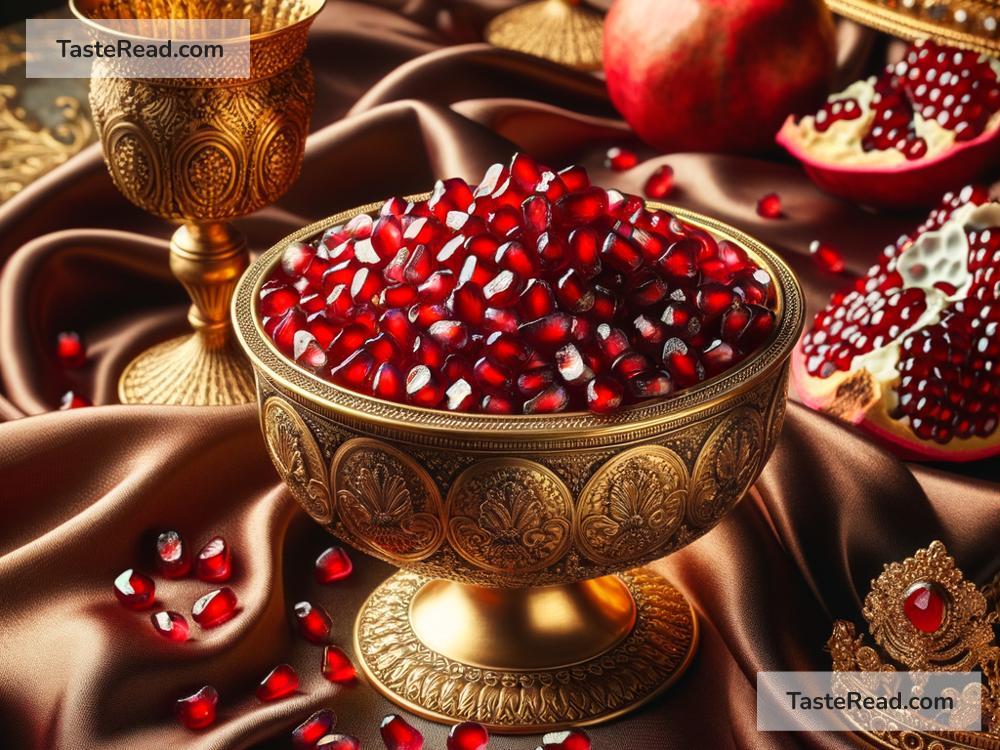The Mythical Connection Between Pomegranates and Royalty
Throughout history, pomegranates have been admired for their beauty and flavor. This fruit, with its shiny red skin and juicy seeds, has often been linked to royalty and divine power in myths and legends from around the world. But why has the pomegranate earned such an impressive reputation? And what’s the connection between this beloved fruit and royalty? Let’s dive into the fascinating stories and symbolism behind this regal fruit.
A Symbol of Wealth and Abundance
Pomegranates have been cherished for thousands of years. In ancient civilizations, they were seen as a symbol of wealth and abundance. The fruit’s round shape and bursting seeds reminded people of prosperity and fertility. A single pomegranate contains hundreds of juicy seeds, making it a perfect metaphor for plenty and richness.
Royalty, especially kings and queens, often associated themselves with symbols of prosperity as a way to communicate their power and success. By claiming the pomegranate as their emblem, rulers could suggest their ability to provide for their people and bring good fortune to their lands. The connection between pomegranates and royalty was both practical and symbolic—a way to show strength, fertility, and prosperity.
Ancient Greek and Roman Beliefs
In Greek mythology, the pomegranate took on a mystical role that linked it to gods, rulers, and even the cycle of life and death. One famous myth is the story of Persephone, the daughter of Demeter, who was kidnapped by Hades and taken to the underworld. While there, Persephone ate six pomegranate seeds. Because of this, she was bound to spend six months of each year in the underworld, which led to the creation of winter and summer cycles. The pomegranate in this myth symbolized life, power, and fate—qualities often associated with royalty.
Similarly, in ancient Rome, pomegranates were considered a fruit of the gods. They were associated with Venus, the goddess of love, beauty, and fertility. Roman royalty and elites would often use pomegranates in ceremonies or artwork as a way to connect themselves to divine strength and authority.
The Pomegranate in Ancient Persia
Perhaps one of the strongest connections between pomegranates and royalty comes from Ancient Persia (modern-day Iran). Pomegranates were a central part of Persian culture, agriculture, and art. They were seen as the “fruit of kings” and often appeared in royal gardens and lavish ceremonies. Persian rulers believed the fruit was a gift from the gods and a sign of their divine power.
The fruit was also linked to military strength and victory. Ancient warriors would eat pomegranates before battle, believing the fruit would give them courage and energy. It wasn’t unusual for pomegranates to appear in royal decorations, coins, and paintings—cementing their connection to Persian royalty.
Biblical and Religious Connections
Pomegranates are also mentioned multiple times in religious texts, like the Bible and the Quran. In the Bible, the fruit symbolizes abundance, beauty, and faith. In the story of King Solomon, pomegranates appear frequently as a decoration in the temple he built—a reflection of their association with sacredness and royal authority.
In Islamic culture, the Quran mentions pomegranates as one of the fruits that grow in paradise. For Muslim rulers throughout history, this connection made pomegranates a symbol of divine favor, a sign that their rule was blessed by the heavens.
The Pomegranate Crown
One of the most interesting aspects of the pomegranate is its connection to crowns. If you look closely at the top of the fruit, it has small, crown-like ridges. These ridges resemble a royal crown, which may explain why the fruit became such a strong symbol of kingship. In both art and architecture, rulers often used pomegranate designs to reflect their royal identity, representing not only their power but also their connection to the divine.
Modern Interpretations
The mythical connection between pomegranates and royalty continues to capture our imagination in the modern world. The fruit still appears in jewelry designs, art pieces, and even logos for luxury brands. In many cultures, pomegranates are included in New Year celebrations, weddings, and religious ceremonies as a gesture of hope and prosperity.
In addition, scientists have discovered the health benefits of pomegranates, adding another layer to its symbolic richness. Just as ancient royals sought the pomegranate for its supposed divine powers, modern individuals embrace it for its ability to promote health and wellness.
Conclusion
From ancient myths to royal gardens, the pomegranate has always been more than just a fruit. Its round, crown-like appearance and rich, juicy seeds made it the perfect symbol for power, abundance, and divine favor. Kings and queens throughout history claimed the pomegranate as their own, weaving it into their cultures and ceremonies.
Even today, the pomegranate serves as a living reminder of the mythical connection between nature’s beauty and humanity’s aspirations for greatness. Whether shared in stories, painted in art, or eaten for its health benefits, the pomegranate remains a fruit of royalty—and a timeless treasure.


